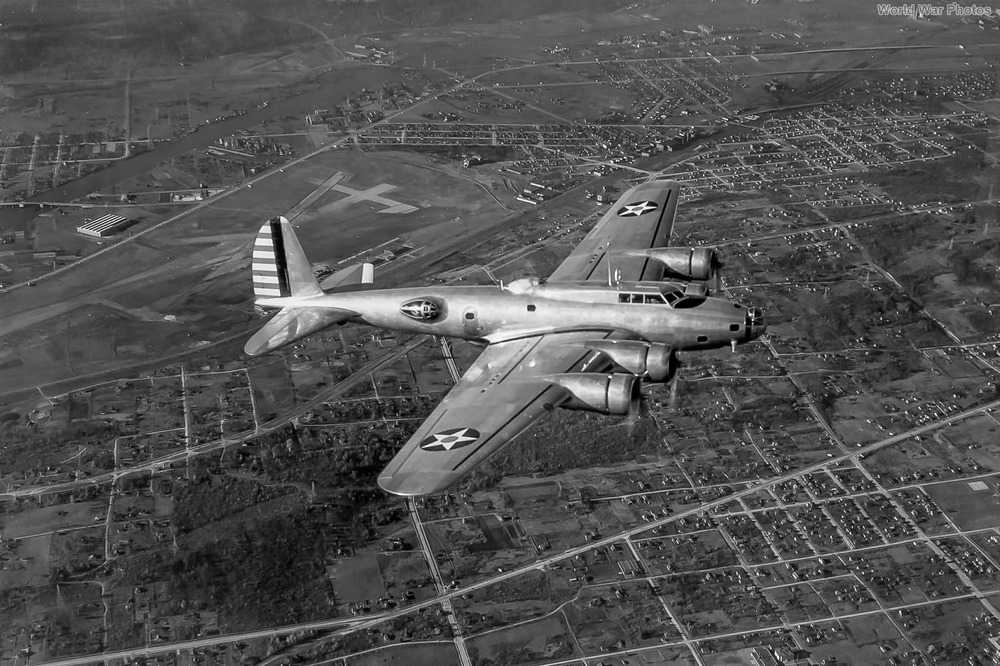History
As thirteen Y1B-17s (later redesignated B-17s) were delivered to the US Army Air Corps in 1937, a fourteenth airframe was constructed with the original intent of serving as a static test article to evaluate airframe strength. However, an incident involving the ninth Y1B-17 altered those plans. During a routine flight, the aircraft inadvertently flew into a thunderstorm and entered a violent, uncontrollable spin. Despite the dangerous conditions, the crew successfully recovered the aircraft. Upon landing, it was discovered that the wings had been bent and several rivets had popped, yet the aircraft remained intact. This episode demonstrated the exceptional structural resilience of the design, proving to the Army Air Corps that the static airframe testing was no longer necessary.
Instead, the fourteenth Y1B-17 was repurposed to explore engine performance improvements, particularly through the use of turbo-superchargers. All existing Y1B-17s were equipped with unsupercharged radial engines and suffered significant power loss at higher altitudes. At the time, it was widely believed that most aircraft operated at moderate altitudes where turbocharging was unnecessary, which had caused US development in that area to lag behind. But as fighter aircraft capabilities rapidly evolved throughout the 1930s and bombers began operating at ever higher altitudes, the Army recognized that turbo-supercharging was essential for maintaining competitive performance.
To this end, the fourteenth airframe was modified with four General Electric turbo-superchargers paired to newer Wright GR-1820-51 Cyclone engines, each rated at 1,000 horsepower. The aircraft was redesignated Y1B-17A, and later B-17A after testing was completed. It bore the serial number 37-369 and first flew in this configuration on April 29, 1938.
Initially, the turbo-superchargers were installed on top of the engine nacelles, but this disrupted airflow and partially caused flight instability. Subsequent tests relocated the turbochargers to the undersides of the nacelles, where they remain on all future B-17 models. However, this location posed difficulties for the inboard engines (positions 2 and 3) due to interference from the main landing gear. To resolve this, the exhaust manifolds for those engines were routed to exit at the 4 o’clock (engine 2) and 8 o’clock (engine 3) positions, then looped back into the nacelles behind the landing gear struts.
This revised installation was completed by October 21, 1938, and the B-17A made its first flight with the updated configuration on November 20, 1938.
On January 31, 1939, the B-17A was transferred to Wright Field in Ohio for formal Army evaluation. The results were highly encouraging. The B-17A achieved a service ceiling of 38,000 feet, compared to 31,000 feet for the standard B-17. Its maximum speed increased from 239 mph at 5,000 feet to 295 mph at 25,000 feet. The turbocharged engines delivered 800 hp at 25,000 feet, while the unturbocharged R-1820-39s of the original B-17 produced only 775 hp at 14,000 feet. The power improvement was so significant that at 35,000 feet, the aircraft could shut down one engine and still complete its mission.
The B-17A’s successful test campaign validated the Army’s investment in turbo-supercharging. As a result, the Army mandated that all future heavy bombers, both B-17s and the upcoming B-24s, would be equipped with turbo-supercharged engines.
This pivotal breakthrough led directly to the first production model, the B-17B, which incorporated the turbocharger configuration proven on the B-17A. Along with various airframe and systems improvements, it marked the beginning of true production for the Flying Fortress. A total of 39 B-17Bs were delivered between October 20, 1939, and March 30, 1940, paving the way for even more capable variants in the years that followed.







